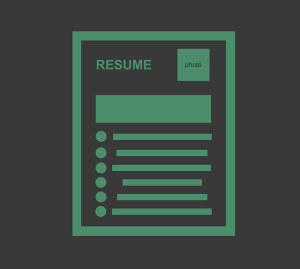The 4 Elements of a Good Resumé
Our friends from Ohio Means Jobs are hosting a Job Fair from 10 a.m. to 1 p.m. on Wednesday, Nov. 14, at Manry Park Community Center in Willowick.
More than 50 employers are attending, all of which have full-time, permanent, direct-hire opportunities available.
Please dress professionally, bring resumés and professional references. For more information, call (440) 350-4000 and choose the “Job Seeker” option.
By the way, Ohio Means Jobs visited us earlier this month for a resumé workshop at our Lake Branch.
And, even if you weren’t able to attend the workshop, Ohio Means Jobs can still share the for key elements of every good resumé.
1. Careful Planning
The goal of any resumé is to win you a job interview. And that starts with being prepared.
Collect information about yourself, including your previous positions, responsibilities, skills, and education. Also, take time to consider your skills. Analyze how they might translate to another job.
Write your resumé with your prospective employer, not yourself. Demonstrate how you can contribute to their bottom line.
Also take time to consider your objective. What type of work do you want? Write your resumé with that in mind.
2. Design & Presentation
Not to be superficial, but it matters how your resumé looks.
Your employer may only skim your resumé initially, so it has to be easy to read.
- Use black text on white or off-white paper
- Keep it to one-page if possible. The goal is to entice an employer, not to share your autobiography.
- Use no more than two type styles — one for headings, the other for body. Type should be 10 points or larger. Avoid underlining or unusual fonts. Keep boldface and italics to a minimum.
- Paper should be 8 1/2″ by 11″. Margins should be at least 3/4 of an inch.
3. Proper Content
Make sure to include:
- education or training background, special courses or skills, and academic honors that are pertinent to your desired job.
- relevant occupational licenses, certifications, and memberships to professional organizations
- contact information so the employer can find you easily.
Don’t include:
- personal information like Social Security number, age, marital status, race or family background
And make sure to proofread your resumé repeatedly! If you’re bad at spotting typographical and grammatical errors, ask someone else to scour your resumé.
4. Right Format
There are three kinds of resumés:
- Chronological, which lists your work experience from most recent and concludes with your education
- Functional, which emphasizes skills and abilities as opposed to previous positions
- Combination, which use aspects of both chronological and functional resumés
Each kind of resumé is appropriate for a different situation. Combination resumés are typically most effective..
However, if you have holes in your employment history or are trying to change careers, then you should draft a functional resumé that focuses on your skills.
Three final tips from Ohio Means Jobs:
- Many employers filter resumés for certain key words. So make sure to include key words pertinent to your industry in your resumé.
- Use a cover letter to highlight key points in your resumé.
- A follow-up phone call or letter can demonstrate your interest in a position. (However, some job listings instruct you not to follow-up. Disregard that at your own risk.)
If you want more help in your career hunt, check out Ohio Means Jobs’ tips for writing a resume and searching for jobs online.


